Prosperity, Depression and the New Deal
(1919-1941)
The Great Depression
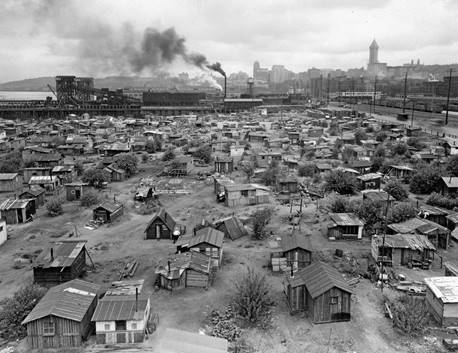
Figure 1 Hooverville. Image. Britannica
LaunchPacks, Encyclopedia Britannica, 8 Feb. 2020.
Content Statement #19
The Great
Depression was caused, in part, by the federal government’s monetary policies,
stock market speculation, and increasing consumer debt. The role of the federal
government expanded as a result of the Great Depression.
Content Elaborations
1.
One factor leading to the
Great Depression in the United States was the excessive amount of lending by
banks. This increased the easy access to and fueled the use of consumer credit.
2.
The Federal Reserve attempted
to curb these practices by constricting the money supply. This action worsened
economic conditions by making it more difficult for people to repay debts. It
was also difficult for businesses and banks to continue operations.
3.
Another factor leading to the
Depression was stock market speculation. Many investors were buying on margin
with the hope of making huge profits. However, the collapse of the stock market
led many to lose their investments and fortunes. The closing of many businesses
led to the rise of consumer debt as workers lost needed income.
4.
During the 1930s, the role of
the federal government was greatly expanded through New Deal legislation,
policies, and agencies which included:
• the Social Security Act;
• the National Recovery
Administration;
• the Securities and Exchange
Commission (SEC);
• the Federal Deposit
Insurance Corporation (FDIC); and
• Public Works Programs (e.g., Works
Progress Administration, Tennessee Valley Authority, Civilian Conservation
Corps).
Let’s Practice: Key Terms
Section A: The Great Depression
During the
1930s, much of the world faced harsh economic conditions. Many people were out
of work, hungry, or homeless. This period is called the Great Depression. It
started in the United States, but it quickly spread throughout the world. The depression caused drastic declines in
economic production and severe unemployment in almost every country.
Section B: Causes of the Great Depression
The Great Depression was the worst
economic downturn in US history. It began in 1929 and did not abate until the
end of the 1930s. The stock market crash
of October 1929 signaled the beginning of the Great Depression. By 1933,
unemployment was at 25 percent, and more than 5,000 banks had gone out of
business. Although President Herbert Hoover attempted to spark
growth in the economy through measures like the Reconstruction Finance
Corporation, these measures did little to solve the crisis.
Ø Post-World War I
Business
o “Laissez-faire” à government does not regulate, oversee business
Ø Stock Market Speculation
o “get rich quick” mentality à invest, then sell quickly
Ø Buying on Credit
o Increase in consumer goods à installment plans à job and income loss
Ø Overproduction of
Consumer Goods
o Goods not everyone could afford to purchaseà 20% of goods went unsold
Ø Weak Farm Sector
o No general prosperity à post-war overproduction à low prices
Ø Worldwide Economic
Depression
o Europe was devastated much earlier than the United States
Let’s Practice: Video
Quiz

Click here to watch a video and practice on a quiz on the Great Depression
Causes.
Section C: Effects of the
Great Depression
As the
effects of the Great Depression cascaded across the US economy, millions of
people lost their jobs. By 1930 there were 4.3 million unemployed; by 1931, 8
million, and in 1932, the number had risen to 12 million. By early 1933, almost
13 million were out of work, and the unemployment rate stood at an astonishing
25 percent. Those who managed to retain their jobs often took pay cuts of a
third or more.
Ø Increase in homelessness
Ø Urban families crowded
into small apartments
Ø Men feel a sense of
failure
Ø Farmers lost their farms;
many moved west
Ø Competition for work
caused racial tensions
Ø Children suffered
effects of poor diet and hygiene
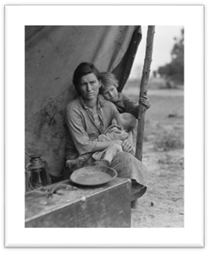
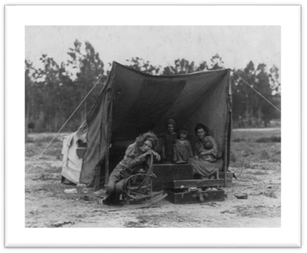
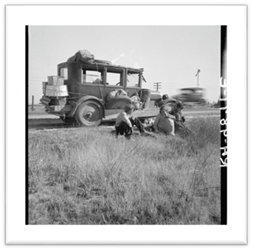
Figure 2: Photographer Dorothea Lange captured many
photographs of migrant families during the Great Depression.
Let’s Practice: Video
Quiz

Click here to watch a video and practice on a quiz on the Great Depression.
Causes and Effects of the Great Depression
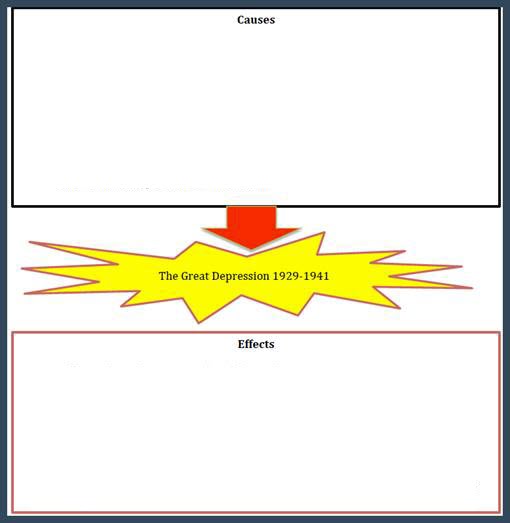
Section D: FDR and the New Deal
The New
Deal was a set of domestic policies enacted under President Franklin D.
Roosevelt that dramatically expanded the federal government’s role in the
economy in response to the Great Depression.
The New Deal
created a broad range of federal government programs that sought to offer
economic relief to the suffering, regulate the private industry, and grow the
economy. The New Deal is often summed up by the “Three Rs”:
- relief à for the
unemployed
- recovery
à
of the economy through federal spending and job creation
- reform
à
of capitalism, utilizing regulatory legislation and the creation of new
social welfare programs
|
The New Deal |
||||
|
Relief |
Immediate action for most
devastating effects |
Civilian Conservation
Corps (CCC) · jobs for young, unmarried males · 9 million men |
Civil Works
Administration (CWA) · Construction jobs |
Works Progress
Administration (WPA) · Included artistic projects · Hired women and minorities |
|
Recovery |
Restart consumer demand, restore economic confidence |
Tennessee Valley Authority (TVA) · Decrease flooding, provide electricity |
Federal Housing Authority (FHA) · Loans for new homes |
National Recovery Administration (NRA) · Quotas and codes Agricultural Adjustment Act (AAA) · Farmers paid NOT to grow crops to raise prices NRA and AAA were struck down by U.S. Supreme Court |
|
Reform |
Eliminate things that
helped cause the Great Depression |
Federal Deposit
Insurance Corporation (FDIC) · Insured bank deposits |
Securities and
Exchange Commission (SEC) · Regulates the stock market |
Social Security Act
(SSA) · Benefits to older citizens · Employee and employer contributions |
Let’s Practice: Video
Quiz

Click here to watch a video and practice on a quiz on the New Deal.